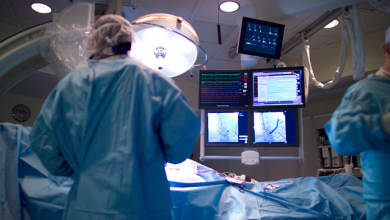Search results
Author(s):
Sandeep K Goyal
,
Bruce S Stambler
Added:
3 years ago
Catheter ablation is the mainstay of treatment in the management of cardiac arrhythmias. The number of catheter ablation procedures performed worldwide in the past 25 years has significantly increased and is expected to increase further. Cardiac ablation requires catheters to be advanced and manipulated within cardiovascular structures. This manipulation has traditionally been performed under…
View more
Sabine Ernst
Job title: Consultant Cardiologist
Author
Ross Hunter
Job title: Consultant and Professor of Cardiology
Author
Author(s):
Usha B Tedrow
Added:
3 years ago
Since the 1980s, dramatic advances in electrophysiology procedures have occurred. Catheter positioning is most often assisted by fluoroscopy. Sophisticated electroanatomical mapping systems can also display catheter position and create a 3D depiction of the anatomy. Magnetic resonance imaging (MRI) and computed tomography (CT) data can also be integrated, facilitating complex ablation procedures…
View more
Author(s):
Charalampos Kriatselis
Added:
3 years ago
Atrial fibrillation (AF) is the most common form of cardiac arrhythmia and is associated with high rates of morbidity and mortality.1 AF can be paroxysmal or persistent, and remains asymptomatic in some cases. However, in more severe and persistent cases AF may cause congestive heart failure, palpitations, syncope, and chest pains. Additionally, patients with AF have a significantly higher risk…
View more
Author(s):
Rebecca S Steinberg
,
Weston Dicken
,
Alexis Cutchins
Added:
7 months ago
Author(s):
Jose Luis Zamorano
Added:
3 years ago
2D echocardiography (2DE) is a common diagnostic and treatment planning tool in clinical cardiology, especially for the assessment of left ventricular (LV) volume and function. However, traditional 2DE is severely limited by its dependence on geometrical assumptions, which can lead to inaccuracies in volume quantification.1 Because 3D echocardiographic (3DE) imaging eliminates geometrical…
View more
Author(s):
Burkhard Hügl
,
Zdravena Findeisen
Added:
3 years ago
Abstract
The advantages of intracardiac echocardiography (ICE) include shorter procedure times, reduced radiation exposure and the elimination of the need for general anesthesia. It is also effective in the safe performance of transseptal punctures. These have led to its increasing use in electrophysiology (EP) procedures. The use of ICE provides unrestricted access to the cardiac anatomy and…
View more
MXR for Cardiology
Author(s):
David Bloom
,
Michael K Southworth
,
Jonathan R Silva
,
et al
Added:
1 year ago
Article
Author(s):
Alexandra Gonçalves
,
Carla Sousa
,
José Alberto de Agustín
,
et al
Added:
3 years ago
Valvular disease is the most prevalent structural heart disease among adults and its burden is growing along with the increase in life expectancy.1 Mitral regurgitation (MR) is the second most frequent valvular disease, after aortic stenosis. Its natural history is very variable and highly dependent on the presence of symptoms. However, even in asymptomatic patients, the prognosis of severe MR is…
View more













